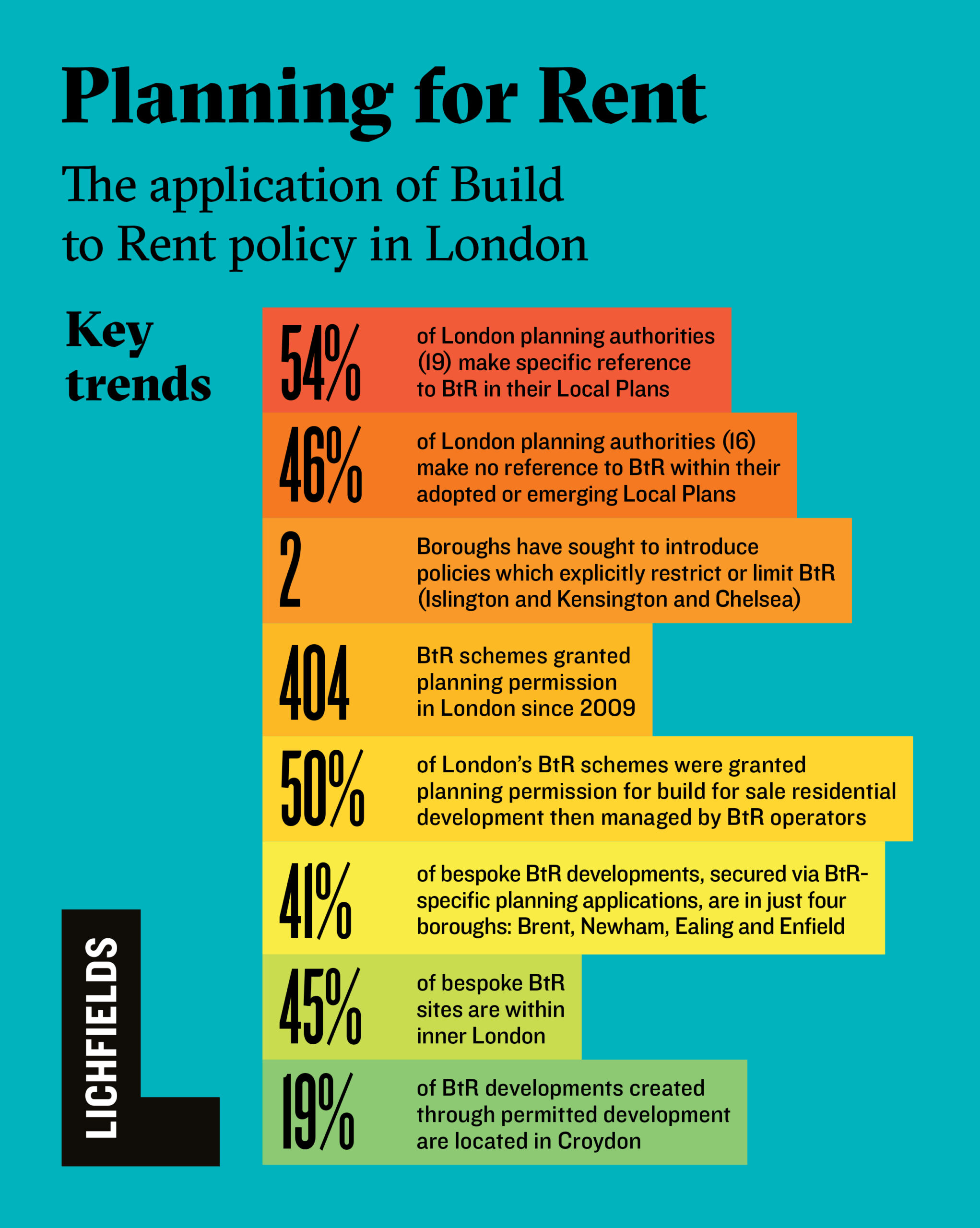A new report has shared fresh insight into the growth of London’s Build to Rent (BtR) sector and how the capital’s planning policies are encouraging this growth.

Demand for Build to Rent properties is rising and investor appetite is growing which is driving a marked increase in BtR planning permissions. However, The ‘Planning for Rent Insight Report’ by national consultants Lichfields has revealed that planning policy across all boroughs is mixed and could do far more to provide a comprehensive or consistent basis for the delivery of new London BtR schemes.
A key finding highlights a stark inconsistency in how BtR is addressed in Local Plan policy across the capital. Of the 35 local planning authorities in London, 46% make no reference to BtR in their emerging or adopted Local Plans.
The London Plan provides a strong policy foundation for BtR developments, but the support isn’t always echoed at the local borough level. Almost half (45%) of bespoke BtR sites are within inner London and 41% of bespoke BtR developments, secured via specific planning applications, are in just four boroughs: Brent, Newham, Ealing and Enfield.

Adam Donovan, Planning Director at Lichfields, who is co-author of the report with Ben Kelway, said: “Our study into the Build to Rent sector in London offers a clear insight into the growth of this market and how planning policies are adapting.
“It’s evident that while the London Plan provides a robust and positive framework for Build to Rent, there is a need for individual boroughs to echo this support.
“Boroughs must adopt a more proactive approach and align their planning policies to genuinely harness the benefits of Build to Rent.
“In failing to do so, the BtR sector in London is being detrimentally affected despite the high demand for secure, well managed rental properties.
“If local authorities developed a bespoke policy for BtR developments, the sector would become a lot stronger and more stable, helping to meet the chronic housing need in the capital.”
The London Plan advocates for greater flexibility in design policies for BtR schemes in comparison to traditional for sale schemes. However, Lichfield’s study indicates that this is not happening in practice. For instance, half (50%) of London’s BtR projects were granted planning permission as Build for Sale residential developments but later managed by BtR operators.
The report found that local borough policies consistently fail to differentiate between for sale housing and BtR schemes, meaning applications for BtR are assessed against policy designed for private sale developments. This creates a requirement for each planning application for BtR to provide individual justification, which makes the planning process for BtR more complex than it needs to be.
Ben Kelway, Lichfields’ Senior Director, added: “What is needed is a greater differentiation in development management policies and more flexibility in their application to assist in the delivery of BtR schemes.
“In particular, policies covering design standards, amenity space requirements and dwelling mix should reflect the specificities of BtR.
“BtR policy has come a long way in the last 10 years as the sector has matured and continues to grow. However, the planning system at a local authority level could do far more to promote and facilitate BtR developments in London.
“The opportunities presented by good quality BtR developments in the right locations are significant in terms of housing delivery, affordable housing and London’s communities.
“With the right local policy in place, the BtR market in London can thrive and, importantly, create a blueprint nationally for Build to Rent housing.
“We must push the Build to Rent initiatives higher up the housing agenda, so they can positively contribute to housing delivery not just in London but nationwide.”
The Build to Rent Insight report reviewed BtR planning applications which have been approved since 2009. It assessed the spatial distribution of these developments across the London boroughs, providing an analysis of how these development patterns align with policy.
For the full report and more details on the key findings, visit:
